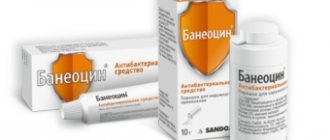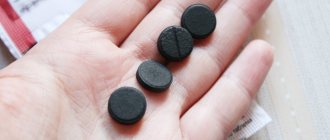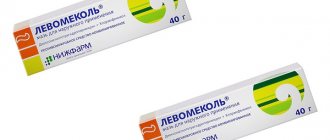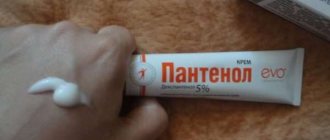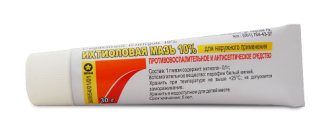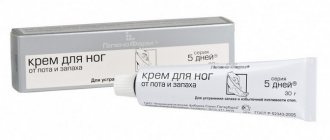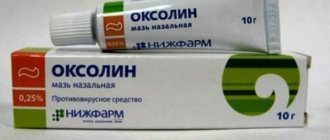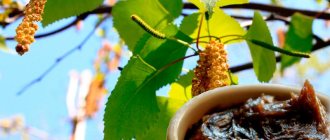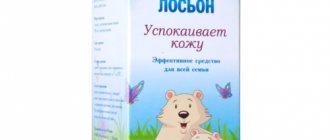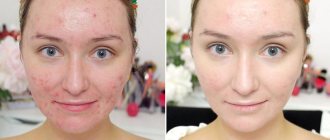Causes of rashes
Acne can occur in the following cases:
- hormonal changes during puberty;
- hormonal imbalances, which can be caused by diseases of the thyroid gland, damage to the adrenal glands or pituitary gland;
- eating large amounts of foods rich in carbohydrates;
- heart or vascular disease;
- disorders of the digestive tract;
- gynecological diseases;
- violations of personal hygiene rules;
- bacterial infections;
- insufficient intake of vitamins into the body;
- excessive activity of the sebaceous glands;
- severe stress;
- change in climatic conditions;
- use of inappropriate cosmetics;
- genetic predisposition.
Analogs
The drug has analogues:
- Structural (contain the same components in the same dosages): Netran (based on fludarabine), Levomethyl (contains chloramphenicol and methyluracil); Levosin (contains trimecaine, methyluracil, sulfadimethoxine, chloramphenicol); Fastin 1.
- Non-structural (they have different ingredients, dosages, indications and contraindications).
Non-structural analogues:
- Streptonitol (contains aminitrozole);
- Salicylic-zinc paste;
- Oflomelid;
- Liniment Vishnevsky;
- Ichthyol ointment;
- Tetracycline ointment;
- Metrogyl gel;
- Erythromycin ointment.
Cheaper, more effective and accessible analogues are Netran, Levomethyl, Levosin. Levosin has low cost and high efficiency (it contains strong antibacterial components).
Levomycetin and syntomycin ointments have a similar composition.
Before using an analogue, you need to consult a doctor (the analogue may not always be suitable for treating the problem the patient is facing).
Treatment
It is not always possible to get rid of acne using cosmetics. In some cases, medications are used to treat acne. Their purpose depends on what exactly caused the acne.
In complex treatment, not only external agents can be used, but also systemic drugs, namely:
- hepaprotectors;
- sorbents;
- oral contraceptives;
- corticosteroids;
- antidepressants.
Panthenol
It has a moisturizing, anti-inflammatory and healing effect, accelerates the skin restoration process. The drug contains dexpanthenol and a number of excipients. Available on sale in tubes (5%) of 25 and 50 g.
It is used in the treatment of abscesses, dermatitis of various types, wounds, damage to the integrity of the skin, diaper rash in infants, cracks and inflammation of the nipples in nursing mothers.
Contraindications may include cases of hypersensitivity to the components of the drug. With the correct dosage, no side effects were detected.
ATC and ICD-10 codes
Drugs for the treatment of acne according to the ATC (Anatomical Therapeutic Classification of Medicines) are divided as follows:
- D – drugs for the treatment of skin diseases;
- D10 – drugs for the treatment of acne;
- D10A – preparations for local treatment of acne;
- D10D – drugs for the systemic treatment of acne.
ICD-10 (International Classification of Diseases, Tenth Revision) identifies the following types of acne:
- Ordinary (ICD-10 – L0). They are pustules or blackheads.
- Globular (ICD-10 – L1). They are inflammatory nodes that reach large sizes.
- Smallpox (ICD-10 – L2). They look like purplish-red ulcers and most often affect people over 40 years of age.
- Tropical (ICD-10 – L3). Appear when a person enters hot countries.
- Children's (ICD-10 – L4). They occur in newborns as a result of maternal hormones entering the child’s circulatory system.
Unfortunately, it is contraindicated for me
Good day, I would like to share my experience of using this ointment.
I have heard about Levomekol for a long time, my mother, grandmother, doctors and doctors praised and praise it for literally everything: scratches, burns, surgery, inflammation, skin diseases.
I first came across this ointment just a couple of years ago, when my face was covered in pimples, then I read that you can apply Levomekol at night and by the morning the pimple will go away. I tried it, but didn't see any results. After some time, I gave it another chance, applied it, woke up in the morning - everything was in place. I abandoned it.
And so, I finally had intimate plastic surgery, in the extract the doctor indicated that sterile gauze with a thick layer of levomekol should be applied to the suture site.
I did this for three days, and on the fourth day everything started to itch so much that I couldn’t find a place for myself. I attributed it all then to the healing of the stitches, the resorption of the threads, the side effects of which were prescribed to me by the antibiotic. She applied it less often, less, but continued the “treatment” with levomekol. I searched the Internet for information about a possible allergy to levomekol, but did not find anything useful.
Levomekol went into the back box.
Not long ago I applied another ointment (synthomycin) to the pimples (on my face) at night and went to bed, in the morning everything began to itch, even in those places where I applied Levomekol after the operation, it itched and itched so much that nothing could help. I compared the compositions of levomekol and syntomycin and it turned out that the composition is identical, the main substance contained in both ointments is chloramphenicol, only levomekol also contains methyluracil.
Based on this, it turns out that I am allergic to chloramphenicol.
In the morning I drank claretin and applied namaz to the affected areas of the acriderm. The allergy treatment process was very slow. Be careful and healthy!
It’s a pity that such effective antibiotics6 as syntomycin and levomekol did not work for me.
I hope my review was useful to someone, take care of yourself!
Mode of application
The use of ointments for acne depends on the type of acne and the components of the product. Most often, such preparations are applied to cleansed skin twice a day, morning and evening.
But in the presence of ulcers, ointments such as Ichthyol, Vishnevsky, Levomekol are applied under the bandage. To do this, squeeze a small amount of the product onto a piece of sterile bandage, apply it to the affected area and fix it with a bandage.
This bandage is changed periodically until the contents of the abscess come out and the inflammatory process decreases.
Gistan
Parapharmaceutical external remedy used for allergic rashes on the skin of the face, hands and body: for skin itching, urticaria, vesicular (vesicular) allergic rashes.
The cream contains extracts of “anti-allergic” herbs and lily of the valley essential oil. The molecular structure of lily of the valley essential oil facilitates its easy penetration into the skin, resulting in stimulation and improvement of metabolic processes and blood circulation. Gistane is used as an external remedy.
Contraindications for use: hypersensitivity to any of the components of the cream.
pharmachologic effect
The pharmacological effect of acne ointments depends on their composition:
- if the main component of the ointment is an antibiotic, then it suppresses the growth and reproduction of pathogenic bacteria, which cause purulent inflammation;
- corticosteroids eliminate the inflammatory process of non-bacterial origin and reduce the manifestation of allergic reactions;
- antiviral agents help fight viruses;
- antimycotics, destroy the cell membranes of fungi or prevent their reproduction.
Side effects
Possible side effects when using the ointment include:
- acute allergic reaction;
- redness of the skin tissues of the hands, chest and other areas treated with ointment;
- increased number of rashes (urticaria);
- swelling;
- itching
In most cases, chloramphenicol is a possible cause of an allergic reaction.
If pathological side effects appear during the course of treatment, it is necessary to undergo a second consultation with a dermatologist to change the dosage or replace Levomekol with another drug.
Review of ointments for acne
To combat acne, not only cosmetics are used, but also ointments that can be purchased at the pharmacy.
Pharmaceutical preparations: Zinc
The ointment contains zinc oxide and petroleum jelly. The drug has an anti-inflammatory and drying effect. It enhances skin regeneration, improves skin elasticity and regulates the functioning of the sebaceous glands.
Video: Does the drug help with rashes?
Vishnevsky ointment
The composition of balsamic liniment according to Vishnevsky includes birch tar, castor oil and xeroform.
The product has anti-inflammatory, softening, regenerating and anti-edematous effects. It quickly penetrates into the deep layers of the skin, draws out pus, fights infection and eliminates inflammation.
For acne, the ointment can be applied to the affected areas of the skin and left for 2 to 3 hours. If there are individual large boils, the product is used under a bandage.
Retinoic
Retinoic ointment contains isotretinoin and vitamin A. This drug enhances skin regeneration, improves the functioning of the sebaceous glands and has an anti-inflammatory effect.
The drug is applied to the skin twice a day. Treatment is continued from 4 to 12 weeks.
Salicylic
The main component of the ointment is salicylic acid, which has the following actions:
- antiseptic;
- anti-inflammatory;
- keratolytic.
The ointment fights pathogenic microorganisms, quickly eliminates the inflammatory process and improves skin regeneration. It is applied to the affected areas twice a day.
Ichthyol
The active ingredient of the ointment is ichthyol (a chemical compound containing a large amount of sulfur).
The product has an anti-inflammatory and antiseptic effect, it quickly penetrates into the deep layers of the skin, improves blood circulation and has a mild analgesic effect.
The product can be applied in a thin layer to problem areas of the skin and left overnight. For furunculosis, compresses with ointment are used.
Synthomycin
The ointment contains syntomycin, which is a broad-spectrum antibiotic. It stops the growth and reproduction of pathogenic microorganisms. Use the product in the presence of pustules or boils.
The ointment is applied to the skin twice a day. Use the product for a week.
Read how to choose a remedy for internal acne on the face. How to use clindovit for acne? More details here.
Tetracycline
The ointment contains a broad-spectrum antibiotic - tetracycline. It actively fights pathogenic microorganisms that cause pustules to appear. Apply the ointment morning and evening for a week.
Sulfuric
The main component of the product is sulfur, which allows you to quickly restore damaged skin cells, heal damage, soften and remove individual epithelial particles. Apply the product twice a day for 7 – 10 days.
Erythromycin
The main active ingredient of the drug is the antibiotic erythromycin. It has antibacterial and anti-inflammatory effects.
The remedy is prescribed if the cause of the rash is pathogenic microbes. Apply it up to three times a day until acne disappears.
Levomekol
The components of the ointment are chloramphenicol and methyluracil. The ointment has an antibacterial effect, eliminates swelling and reduces inflammation. It also enhances skin regeneration.
It is recommended to apply the product pointwise. A small amount of the product is applied to the boil and covered with a bandage.
Baneocin
The ointment contains zinc bacitrocin, which is classified as a local antibiotic. The product is used to treat acne caused by a bacterial infection. It is also used for eczema.
Streptocide
Streptocide, which is part of the ointment, has an antimicrobial effect. The product allows you to get rid of pustules and furunculosis. The ointment is applied in a thin layer to previously cleansed skin twice a day.
Methyluracil
Ointment with methyluracil accelerates skin regeneration, has an anti-edematous and healing effect, and also reduces inflammatory processes. Apply it twice a day for a week.
Dalatsin
The ointment contains the antibiotic clindamycin. It allows you to get rid of pustules and boils, regulates the activity of the sebaceous glands. The ointment prevents the formation of sebaceous plugs and normalizes metabolic processes. It is applied to clean skin 2 – 3 times a day.
Oxolinic
The ointment is used for Dühring's dermatitis, which is characterized by the appearance of a weeping rash, or for molluscum contagiosum or herpes. The product is applied to the affected areas twice a day for 2 weeks.
Hormonal
In some cases, corticosteroids are used to treat acne.
These hormonal ointments are used in the following cases:
- eczema;
- dermatitis;
- psoriasis;
- allergy.
It is not recommended to use such products if the cause of the rash is pathogenic bacteria.
Folk remedies
In addition to pharmaceutical ointments for acne, you can also use folk remedies. To cleanse the skin, decoctions of chamomile, string, calendula or oak bark are used.
To prepare the product, pour a tablespoon of dry raw material into a glass of boiling water and leave for 40 minutes. Then filter and wipe the skin in the morning and evening before applying a medicinal ointment to the skin.
"Levomekol"
The action of this ointment is aimed at combating inflammation, destroying pathogenic infections, and renewing the skin. It is used quite often for subcutaneous acne on the face in teenagers. The drug contains two active substances that provide a stable effect when exposed to the source of pathology:
- Chloramphenicol. A synthetic antibiotic that disrupts the integrity of the membranes of Staphylococcus aureus. The substance destroys the pathogenic environment, relieving inflammation, significantly reducing acne lesions. The ointment is especially effective in the treatment of purulent acne, since the composition “pulls out” their contents.
- Methyluracil. Immunostimulant that accelerates the healing process of the dermis. It helps restore the subcutaneous layer, helping to quickly restore the skin to a healthy appearance. Such an effective interaction between the components of the drug allows you to get rid of many dermatological problems for a long time.
The drug is effective against the vast majority of gram-negative and gram-positive bacteria, rickettsia, spirochetes, and chlamydia. It is necessary to consult a dermatologist before starting treatment, carefully study the instructions, and become familiar with the restrictions. You can use Levomekol ointment for subcutaneous acne three times a day. To do this, treat a napkin with the product and apply it to the problem area. It should be remembered that the duration of such applications should not exceed five minutes. Otherwise, redness and swelling may occur.
You should not make cosmetic masks with Levomekol ointment and lubricate your entire face. The drug has a greasy texture and a not very pleasant smell, so the procedure is unlikely to give you pleasure. At the same time, Levomekol has virtually no contraindications. It can be used during pregnancy and lactation.
Photo: Before and after
Adviсe
In order to get rid of acne, in addition to using medications, you must:
- eat right (reduce the amount of fatty, fried and spicy foods, flour products, sweets);
- to refuse from bad habits;
- avoid stressful situations.
See what causes internal acne on the chin. Clindovit for acne, read reviews below.
What are the reviews of Clearwin for acne?
The answer is here. According to patient reviews, the most effective ointments for acne include Baneocin, Ichthyol, and Zinc. They allow you to quickly get rid of acne and speed up skin regeneration.
If, despite the use of ointments for acne, acne does not disappear, and its manifestations intensify, you must stop using it and seek help from a dermatologist.
Terms of use
The procedure for using the ointment is quite simple, which cannot be said about the accompanying procedures and preparation. Its use requires abandoning most of the decorative cosmetics - in particular, when treating herpes on the lips, it is forbidden to use lipstick, and when eliminating acne, blush, foundation, etc. But no one prohibits the use of mascara, as well as other means that do not limit the access of oxygen to the skin.
When using zinc ointment to treat herpes, you need to follow a fairly strict diet. The reason for this is the accelerated absorption of zinc through the lips, as well as the high likelihood of the ointment entering the digestive system. In particular, the following restrictions will have to be observed:
- Consume a strictly defined amount of foods containing zinc - do not indulge in seafood, sprouted grains and meat;
- Some people, when using zinc ointment, continue to consume products containing copper, which should not be done under any circumstances, since it blocks the absorption of zinc. It is worth giving up potatoes, liver, fresh berries, prunes, as well as beer;
- For the reasons stated above, it is better to avoid vitamin-mineral complexes. If the body needs support, it is better to consult a doctor who will prescribe a harmless medicine.
When using salicylic-zinc ointment or a drug containing chloramphenicol or erythromycin, you should follow a gentle diet and also take auxiliary agents that prevent the development of dysbacteriosis. Regardless of which drug is used, it should be used until the problem is completely eliminated. In addition, it is worth following all the rules throughout the entire treatment - for example, if you start actively using cosmetics at the first relief, all achieved results will be lost.
